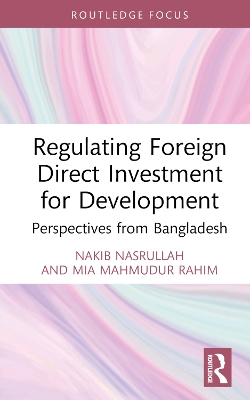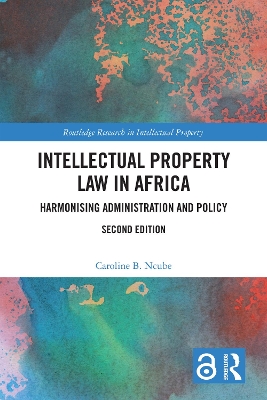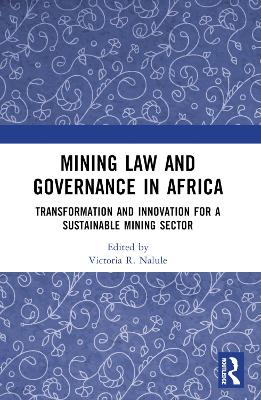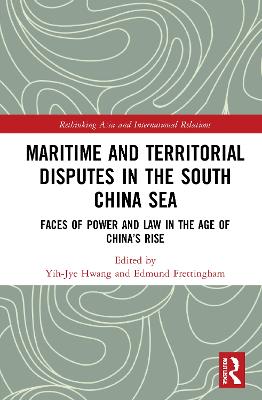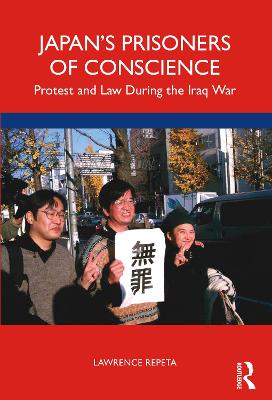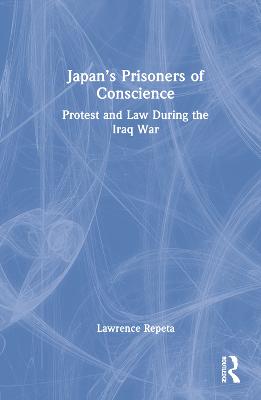Reform and Regulation of Economic Institutions in Afghanistan
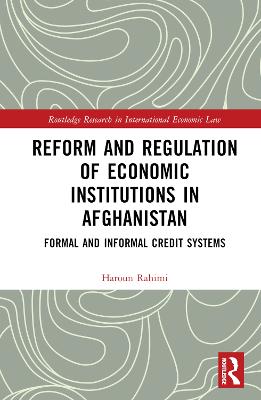 portes grátis
portes grátis
Reform and Regulation of Economic Institutions in Afghanistan
Formal and Informal Credit Systems
Rahimi, Haroun
Taylor & Francis Ltd
10/2022
276
Dura
Inglês
9781032157351
15 a 20 dias
Descrição não disponível.
Acknowledgement
Preface
Introduction
Broader theoretical landscape and the case of Afghanistan
Overview of the book's organization and summary of its argument
Methodology and Definitions
Grounded Theory
Sampling and Data Collection
Definitions
1. Background on the Economy and the Problems of Credit Transacting in Afghanistan
A General Picture of Afghanistan's Economy under the Islamic Republic
Main Types of Actors in Afghanistan's Credit Economy
An Analysis of Businesses in Afghanistan
Business Registry Data on Business Registry and Initial Capital Investment in Five Major Provinces
The Business Survey Data on Business Establishments in Afghanistan
An Overview of the Social Context of Afghanistan's Economy
A Brief Overview of Institutional Context of Afghanistan's Economy
Fundamental Problems of Credit Transactions in Afghanistan
Afghanistan Has a Volatile Business Climate
Formal Property Rights in Afghanistan
Formal Commercial Dispute Resolution in Afghanistan
2. Informal Financial and Dispute Resolution Institutions in Afghanistan
Supply Chains and Trade Credit
Market Competition and Provision of Trade Credit
Weekly Payment System (Ugraee)
How Businesses Come to Trust Credit Sales in Afghanistan
Trade Credit versus Bank Loans
Sources of Initial Capital to Start a Business
Prevailing Institutions in Afghanistan Disincentivize Destructive Innovation and Creative Destruction
Agency Costs Limit Business Expansion
Family Businesses in Afghanistan
Trade Credit from Suppliers Located Outside Afghanistan
Is the Solution Curbing Credit Sales?
Sarrafs and Sarrafi Markets
Deposit-keeping
Domestic Money Transfer (Hawala)
International Money Transfer (Hawala)
Currency Exchange
Speculative Trade in Currencies (Sita) and Public Auctions (Booli)
Sarraf's Checks
Short-Term Working Capital Loans
Medium and Long-Term Sarrafi Loans
Equity Financing
The Case of Balkh's Sarrafi Market
Religious Prohibition of Interest and Access to Finance
Regional Variations within Sarrafi Markets
Gerawee
Size of Gerawee Market
Gerawee and its variations
Important Characteristics of the Gerawee Market
Bay' al-Wafa: Sale with a Right of Repurchase
Gerawee in Fatwas issued by the Afghan Muftis
Status of Gerawee under Afghan Civil Code of 1977
Gerawee cases before Afghan Courts
Sar qufli
What is Sar qufli?
Recognition of Sar qufli by Commercial Courts
The Contrast between Judicial Treatment of Sar qufli and Gerawee
Informal Dispute Resolution Institutions in Afghanistan: Who Uses Them and Why?
Afghan Merchants Prefer Informal Dispute Resolution Institutions
Who Uses Formal and Informal Dispute Resolution Institutions in Afghanistan
Why Merchants Use Informal Dispute Resolution
Variation in the Effectiveness of Informal Dispute Resolution Institutions
Informal Dispute Resolution and Pashtun Culture
The Use of Force to Resolve a Commercial Dispute
3. Afghanistan's Formal Financial Institutions
Formal Financial Intermediaries in Afghanistan: Are Sarrafs Included?
Formal Regulations of Sarrafs
What Is Wrong with the Sarrafi Regulation?
Banks in Afghanistan
Trust in Banks
Banks' Total Assets
Banks' Total Deposits
Banks' Loans
Government Strategic Policies Aimed to Improve Access to Credit during the Islamic Republic
Afghanistan National Peace and Development Framework (2017-2021)
Ministry of Economics' Afghan Government Economic Plan (National Economic Plan) (2013)
Ministry of Commerce and Industries Strategic Plan (Commerce Strategy) (2016-2020)
Afghanistan Central Bank Strategic Plan (Banking Strategy) (2017-2021)
Ministry of Justice Strategic Plan (Justice Strategic Plan) (2014-2018)
Analysis of Afghan Government Strategic Policies
4. A Critique of the Approach to Institutional Reform in Afghanistan, and a Proposal for a New Approach: Grounded Institutional Reform
Grounded Institutional Reform: A Revised Approach for the Countries with Poor Infrastructure, Limited Market Expansion Opportunities, and a Willing Government
Rationales for Anti-Informal Institutions Positions: The Problems of Formalizing Informal Institutions in Afghanistan
Theoretical Underpinning of Anti-Informal Institutions in Afghanistan
Practical Problems of Absorbing Informal Institutions in Afghanistan
What Would Reforms Based on Grounded Institutional Reform Look Like in Afghanistan?
Conclusions and Recommendations
Bibliography
Appendix I
Appendix II
Preface
Introduction
Broader theoretical landscape and the case of Afghanistan
Overview of the book's organization and summary of its argument
Methodology and Definitions
Grounded Theory
Sampling and Data Collection
Definitions
1. Background on the Economy and the Problems of Credit Transacting in Afghanistan
A General Picture of Afghanistan's Economy under the Islamic Republic
Main Types of Actors in Afghanistan's Credit Economy
An Analysis of Businesses in Afghanistan
Business Registry Data on Business Registry and Initial Capital Investment in Five Major Provinces
The Business Survey Data on Business Establishments in Afghanistan
An Overview of the Social Context of Afghanistan's Economy
A Brief Overview of Institutional Context of Afghanistan's Economy
Fundamental Problems of Credit Transactions in Afghanistan
Afghanistan Has a Volatile Business Climate
Formal Property Rights in Afghanistan
Formal Commercial Dispute Resolution in Afghanistan
2. Informal Financial and Dispute Resolution Institutions in Afghanistan
Supply Chains and Trade Credit
Market Competition and Provision of Trade Credit
Weekly Payment System (Ugraee)
How Businesses Come to Trust Credit Sales in Afghanistan
Trade Credit versus Bank Loans
Sources of Initial Capital to Start a Business
Prevailing Institutions in Afghanistan Disincentivize Destructive Innovation and Creative Destruction
Agency Costs Limit Business Expansion
Family Businesses in Afghanistan
Trade Credit from Suppliers Located Outside Afghanistan
Is the Solution Curbing Credit Sales?
Sarrafs and Sarrafi Markets
Deposit-keeping
Domestic Money Transfer (Hawala)
International Money Transfer (Hawala)
Currency Exchange
Speculative Trade in Currencies (Sita) and Public Auctions (Booli)
Sarraf's Checks
Short-Term Working Capital Loans
Medium and Long-Term Sarrafi Loans
Equity Financing
The Case of Balkh's Sarrafi Market
Religious Prohibition of Interest and Access to Finance
Regional Variations within Sarrafi Markets
Gerawee
Size of Gerawee Market
Gerawee and its variations
Important Characteristics of the Gerawee Market
Bay' al-Wafa: Sale with a Right of Repurchase
Gerawee in Fatwas issued by the Afghan Muftis
Status of Gerawee under Afghan Civil Code of 1977
Gerawee cases before Afghan Courts
Sar qufli
What is Sar qufli?
Recognition of Sar qufli by Commercial Courts
The Contrast between Judicial Treatment of Sar qufli and Gerawee
Informal Dispute Resolution Institutions in Afghanistan: Who Uses Them and Why?
Afghan Merchants Prefer Informal Dispute Resolution Institutions
Who Uses Formal and Informal Dispute Resolution Institutions in Afghanistan
Why Merchants Use Informal Dispute Resolution
Variation in the Effectiveness of Informal Dispute Resolution Institutions
Informal Dispute Resolution and Pashtun Culture
The Use of Force to Resolve a Commercial Dispute
3. Afghanistan's Formal Financial Institutions
Formal Financial Intermediaries in Afghanistan: Are Sarrafs Included?
Formal Regulations of Sarrafs
What Is Wrong with the Sarrafi Regulation?
Banks in Afghanistan
Trust in Banks
Banks' Total Assets
Banks' Total Deposits
Banks' Loans
Government Strategic Policies Aimed to Improve Access to Credit during the Islamic Republic
Afghanistan National Peace and Development Framework (2017-2021)
Ministry of Economics' Afghan Government Economic Plan (National Economic Plan) (2013)
Ministry of Commerce and Industries Strategic Plan (Commerce Strategy) (2016-2020)
Afghanistan Central Bank Strategic Plan (Banking Strategy) (2017-2021)
Ministry of Justice Strategic Plan (Justice Strategic Plan) (2014-2018)
Analysis of Afghan Government Strategic Policies
4. A Critique of the Approach to Institutional Reform in Afghanistan, and a Proposal for a New Approach: Grounded Institutional Reform
Grounded Institutional Reform: A Revised Approach for the Countries with Poor Infrastructure, Limited Market Expansion Opportunities, and a Willing Government
Rationales for Anti-Informal Institutions Positions: The Problems of Formalizing Informal Institutions in Afghanistan
Theoretical Underpinning of Anti-Informal Institutions in Afghanistan
Practical Problems of Absorbing Informal Institutions in Afghanistan
What Would Reforms Based on Grounded Institutional Reform Look Like in Afghanistan?
Conclusions and Recommendations
Bibliography
Appendix I
Appendix II
Este título pertence ao(s) assunto(s) indicados(s). Para ver outros títulos clique no assunto desejado.
Afghan Merchants;Afghan Government;Informal Institutions;Taliban Takeover;Credit Transacting;Government Strategic Policies;Afghan Context;Working Capital Loans;Trade Credit;Afghanistan's Economy;Commercial Courts;Formal Property Rights;Working Capital Financing;Formal Dispute Resolution;Business Registry Data;Money Service Providers;Afghan Republic;Kabul Bank;Illegal Economy;Informal Dispute Resolution;Equity Partners;Commerce Strategy;Gdp Growth;Loan Distribution;Business Survey Data
Acknowledgement
Preface
Introduction
Broader theoretical landscape and the case of Afghanistan
Overview of the book's organization and summary of its argument
Methodology and Definitions
Grounded Theory
Sampling and Data Collection
Definitions
1. Background on the Economy and the Problems of Credit Transacting in Afghanistan
A General Picture of Afghanistan's Economy under the Islamic Republic
Main Types of Actors in Afghanistan's Credit Economy
An Analysis of Businesses in Afghanistan
Business Registry Data on Business Registry and Initial Capital Investment in Five Major Provinces
The Business Survey Data on Business Establishments in Afghanistan
An Overview of the Social Context of Afghanistan's Economy
A Brief Overview of Institutional Context of Afghanistan's Economy
Fundamental Problems of Credit Transactions in Afghanistan
Afghanistan Has a Volatile Business Climate
Formal Property Rights in Afghanistan
Formal Commercial Dispute Resolution in Afghanistan
2. Informal Financial and Dispute Resolution Institutions in Afghanistan
Supply Chains and Trade Credit
Market Competition and Provision of Trade Credit
Weekly Payment System (Ugraee)
How Businesses Come to Trust Credit Sales in Afghanistan
Trade Credit versus Bank Loans
Sources of Initial Capital to Start a Business
Prevailing Institutions in Afghanistan Disincentivize Destructive Innovation and Creative Destruction
Agency Costs Limit Business Expansion
Family Businesses in Afghanistan
Trade Credit from Suppliers Located Outside Afghanistan
Is the Solution Curbing Credit Sales?
Sarrafs and Sarrafi Markets
Deposit-keeping
Domestic Money Transfer (Hawala)
International Money Transfer (Hawala)
Currency Exchange
Speculative Trade in Currencies (Sita) and Public Auctions (Booli)
Sarraf's Checks
Short-Term Working Capital Loans
Medium and Long-Term Sarrafi Loans
Equity Financing
The Case of Balkh's Sarrafi Market
Religious Prohibition of Interest and Access to Finance
Regional Variations within Sarrafi Markets
Gerawee
Size of Gerawee Market
Gerawee and its variations
Important Characteristics of the Gerawee Market
Bay' al-Wafa: Sale with a Right of Repurchase
Gerawee in Fatwas issued by the Afghan Muftis
Status of Gerawee under Afghan Civil Code of 1977
Gerawee cases before Afghan Courts
Sar qufli
What is Sar qufli?
Recognition of Sar qufli by Commercial Courts
The Contrast between Judicial Treatment of Sar qufli and Gerawee
Informal Dispute Resolution Institutions in Afghanistan: Who Uses Them and Why?
Afghan Merchants Prefer Informal Dispute Resolution Institutions
Who Uses Formal and Informal Dispute Resolution Institutions in Afghanistan
Why Merchants Use Informal Dispute Resolution
Variation in the Effectiveness of Informal Dispute Resolution Institutions
Informal Dispute Resolution and Pashtun Culture
The Use of Force to Resolve a Commercial Dispute
3. Afghanistan's Formal Financial Institutions
Formal Financial Intermediaries in Afghanistan: Are Sarrafs Included?
Formal Regulations of Sarrafs
What Is Wrong with the Sarrafi Regulation?
Banks in Afghanistan
Trust in Banks
Banks' Total Assets
Banks' Total Deposits
Banks' Loans
Government Strategic Policies Aimed to Improve Access to Credit during the Islamic Republic
Afghanistan National Peace and Development Framework (2017-2021)
Ministry of Economics' Afghan Government Economic Plan (National Economic Plan) (2013)
Ministry of Commerce and Industries Strategic Plan (Commerce Strategy) (2016-2020)
Afghanistan Central Bank Strategic Plan (Banking Strategy) (2017-2021)
Ministry of Justice Strategic Plan (Justice Strategic Plan) (2014-2018)
Analysis of Afghan Government Strategic Policies
4. A Critique of the Approach to Institutional Reform in Afghanistan, and a Proposal for a New Approach: Grounded Institutional Reform
Grounded Institutional Reform: A Revised Approach for the Countries with Poor Infrastructure, Limited Market Expansion Opportunities, and a Willing Government
Rationales for Anti-Informal Institutions Positions: The Problems of Formalizing Informal Institutions in Afghanistan
Theoretical Underpinning of Anti-Informal Institutions in Afghanistan
Practical Problems of Absorbing Informal Institutions in Afghanistan
What Would Reforms Based on Grounded Institutional Reform Look Like in Afghanistan?
Conclusions and Recommendations
Bibliography
Appendix I
Appendix II
Preface
Introduction
Broader theoretical landscape and the case of Afghanistan
Overview of the book's organization and summary of its argument
Methodology and Definitions
Grounded Theory
Sampling and Data Collection
Definitions
1. Background on the Economy and the Problems of Credit Transacting in Afghanistan
A General Picture of Afghanistan's Economy under the Islamic Republic
Main Types of Actors in Afghanistan's Credit Economy
An Analysis of Businesses in Afghanistan
Business Registry Data on Business Registry and Initial Capital Investment in Five Major Provinces
The Business Survey Data on Business Establishments in Afghanistan
An Overview of the Social Context of Afghanistan's Economy
A Brief Overview of Institutional Context of Afghanistan's Economy
Fundamental Problems of Credit Transactions in Afghanistan
Afghanistan Has a Volatile Business Climate
Formal Property Rights in Afghanistan
Formal Commercial Dispute Resolution in Afghanistan
2. Informal Financial and Dispute Resolution Institutions in Afghanistan
Supply Chains and Trade Credit
Market Competition and Provision of Trade Credit
Weekly Payment System (Ugraee)
How Businesses Come to Trust Credit Sales in Afghanistan
Trade Credit versus Bank Loans
Sources of Initial Capital to Start a Business
Prevailing Institutions in Afghanistan Disincentivize Destructive Innovation and Creative Destruction
Agency Costs Limit Business Expansion
Family Businesses in Afghanistan
Trade Credit from Suppliers Located Outside Afghanistan
Is the Solution Curbing Credit Sales?
Sarrafs and Sarrafi Markets
Deposit-keeping
Domestic Money Transfer (Hawala)
International Money Transfer (Hawala)
Currency Exchange
Speculative Trade in Currencies (Sita) and Public Auctions (Booli)
Sarraf's Checks
Short-Term Working Capital Loans
Medium and Long-Term Sarrafi Loans
Equity Financing
The Case of Balkh's Sarrafi Market
Religious Prohibition of Interest and Access to Finance
Regional Variations within Sarrafi Markets
Gerawee
Size of Gerawee Market
Gerawee and its variations
Important Characteristics of the Gerawee Market
Bay' al-Wafa: Sale with a Right of Repurchase
Gerawee in Fatwas issued by the Afghan Muftis
Status of Gerawee under Afghan Civil Code of 1977
Gerawee cases before Afghan Courts
Sar qufli
What is Sar qufli?
Recognition of Sar qufli by Commercial Courts
The Contrast between Judicial Treatment of Sar qufli and Gerawee
Informal Dispute Resolution Institutions in Afghanistan: Who Uses Them and Why?
Afghan Merchants Prefer Informal Dispute Resolution Institutions
Who Uses Formal and Informal Dispute Resolution Institutions in Afghanistan
Why Merchants Use Informal Dispute Resolution
Variation in the Effectiveness of Informal Dispute Resolution Institutions
Informal Dispute Resolution and Pashtun Culture
The Use of Force to Resolve a Commercial Dispute
3. Afghanistan's Formal Financial Institutions
Formal Financial Intermediaries in Afghanistan: Are Sarrafs Included?
Formal Regulations of Sarrafs
What Is Wrong with the Sarrafi Regulation?
Banks in Afghanistan
Trust in Banks
Banks' Total Assets
Banks' Total Deposits
Banks' Loans
Government Strategic Policies Aimed to Improve Access to Credit during the Islamic Republic
Afghanistan National Peace and Development Framework (2017-2021)
Ministry of Economics' Afghan Government Economic Plan (National Economic Plan) (2013)
Ministry of Commerce and Industries Strategic Plan (Commerce Strategy) (2016-2020)
Afghanistan Central Bank Strategic Plan (Banking Strategy) (2017-2021)
Ministry of Justice Strategic Plan (Justice Strategic Plan) (2014-2018)
Analysis of Afghan Government Strategic Policies
4. A Critique of the Approach to Institutional Reform in Afghanistan, and a Proposal for a New Approach: Grounded Institutional Reform
Grounded Institutional Reform: A Revised Approach for the Countries with Poor Infrastructure, Limited Market Expansion Opportunities, and a Willing Government
Rationales for Anti-Informal Institutions Positions: The Problems of Formalizing Informal Institutions in Afghanistan
Theoretical Underpinning of Anti-Informal Institutions in Afghanistan
Practical Problems of Absorbing Informal Institutions in Afghanistan
What Would Reforms Based on Grounded Institutional Reform Look Like in Afghanistan?
Conclusions and Recommendations
Bibliography
Appendix I
Appendix II
Este título pertence ao(s) assunto(s) indicados(s). Para ver outros títulos clique no assunto desejado.
Afghan Merchants;Afghan Government;Informal Institutions;Taliban Takeover;Credit Transacting;Government Strategic Policies;Afghan Context;Working Capital Loans;Trade Credit;Afghanistan's Economy;Commercial Courts;Formal Property Rights;Working Capital Financing;Formal Dispute Resolution;Business Registry Data;Money Service Providers;Afghan Republic;Kabul Bank;Illegal Economy;Informal Dispute Resolution;Equity Partners;Commerce Strategy;Gdp Growth;Loan Distribution;Business Survey Data

